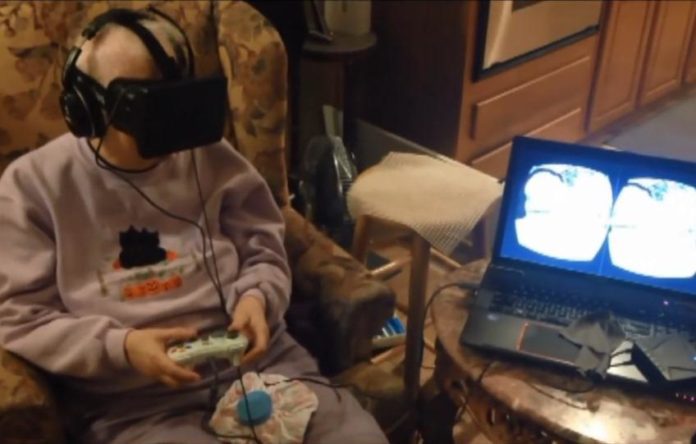A challenging issue nursing home patients have is their lack of movement which is vital to maintaining independence and health. While most nursing homes, especially in Denmark where the study was performed, have easy access to gyms and physical therapists they’re highly under utilized. This lack of exercise combined with chronically sedentary lifestyles has detrimental effects on the body and mind decreasing the quality of life. The greatest challenge seems to be keeping the seniors interest and making the exercise enjoyable since options are generally limited and monotonous. However virtual reality on exercise bikes appears to combat these struggles and get the elderly moving.
Jon Ram Bruun-Pedersen of the Multisensory Experience Lab in the Department of Architecture, Design and Media Technology at Aalborg University Copenhagen is trying to change the mindset on exercise from another item on the to do list to an entertaining digital experience.
“All too often the elderly end up sitting and looking at a wall or staring passively into a television. As a rule they’re usually not particularly motivated to exercise, partly because getting moving again after a long period of inactivity can cause pain, and partly because it’s not particularly interesting to sit and look at a wall while you bike,” he said.
Movie Theater Like Rides
Working alongside physical therapists at the Copenhagen nursing home Akaciegården, Jon Ram Bruun-Pedersen set up large TV screens facing the exercise bikes in the group exercise room. The 21 senior participants would then follow virtual paths and landscapes displayed on the TVs as they cycled along.
The virtual options were plentiful and varied. The nursing home residents could pick riding on a mountainside, going into a freshly snow covered forest or pleasantly riding along in a park between ponds, wild flowers and even butterflies. The bikes stayed synced with the TVs the whole time constantly adjusting the video speed to match their intensity outputs.
“The study showed that seniors were really happy with the experience,” says Jon Ram Bruun-Pedersen. “They really lived it and felt as if they had to pedal extra hard to get up the hill on the screen — even though they really didn’t feel higher resistance on the bike.”
In Come the VR Goggles
For the second phase of the study Bruun-Pedersen intensified the seniors virtual experience. The technology shifted from a stationary screen to each participant being geared up with VR goggles. The goggles blocked out any external views directing the focus to the small screens inside the headsets. As the participants rode along they could look around them and explore their virtual surroundings with real time feedback. They could watch the birds soaring, gaze over cliff edges and even move freely around lifelike obstacles.
Participants truly felt like they had returned to a world they knew so well while exploring new landscapes. Best of all they were able to do this from the safety of the nursing home on a stationary bike under the guidance of physical therapists.
“We set the study up so the participants could ride in the same landscapes they knew from the screens. They took to the experience amazingly well. For many people stepping into a virtual world can be an overwhelming experience, but the elderly subjects had a surprisingly high tolerance threshold,” Bruun-Pedersen explains.
Promising Possibilities
The study clearly found that the use of VR technology significantly increased the participants desire and enjoyment to exercise.

“This is really positive,” he says. “Partly because it is good for them physically to move more, but also because I wanted them to experience getting out of the nursing home and out in the world — even if it’s a virtual world.”
While the primary focus of the study was improve adherence and motivation for exercise researchers were also happy with the external experience they were able to connect participants with.
“It may well be you can’t get out of the nursing home and take a plane to Mallorca or a bus to the Harz mountains, but you can experience what it’s like to go for a walk in the mountains or visit some of the world’s great attractions. It could also be that you’d like to go for a walk in your childhood neighborhood or something else that has had great significance,” he says. “The possibilities are there with Virtual Reality.”
Substantial Demand
The study at Akaciegården concluded earlier this year, but the participants and therapists are still going strong with VR training. After the study finished the physical therapists were so excited with the results they contacted Bruun-Pedersen to help permanently incorporate VR training with their patients. Even the relatives of the participants are requesting that the VR training become a permanent staple at the nursing home gym.











